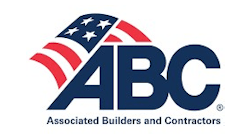“Moving American earth is my passion,” notes Frank Marshall, second-generation president of G.E. Marshall, a diversified site work operation doing mostly highway excavating and grading among other services throughout northwest Indiana in the glacial till of the Lake Michigan watershed. Marshall’s family has long-held ties to the area, having homesteaded there 275 years ago. In 1960, Glen Marshall, now deceased, started an excavation and trucking company. Frank Marshall now manages it with brothers Ross, Clinton, and Roger. His son Louis, 33, does GPS-based field work, and his other son Justus, 18, will pursue construction engineering and business in college. His nephews also are in the business.
The company employs up to 100 employees, depending on the workload and time of year. The company uses GPS-guided machine control in its fleet, which includes about 200 excavators, rubber-tired loaders, track loaders, combination backhoes, dozers, scrapers, graders, off-road trucks, roller/self-propelled compactors, and recycling/crushing equipment, with 30 newer John Deere pieces. Its trucking subsidiary, M5 Inc., provides interstate site work transport services. The company has developed experience working in all types of soil and site conditions for heavy industrial, commercial, residential, and infrastructure market sectors. Indiana is positioned as an important US transportation and industry hub. G.E. Marshall crews strive to ensure projects are executed correctly and on deadline, year-round. Marshall’s strategy for keeping the business humming is a healthy work backlog, repeat business, and not letting expenditures exceed revenues. “We purchase equipment when it’s needed, not wanted,” he says.
Marshall credits employee bonuses for a high retention rate. “We retire employees, we don’t lose employees,” he says.
Among the company’s challenging projects: the installation of a deep lift station in an area with water and soil problems, as well as a 6-mile section of a new bypass requiring a large peat bog section to be remediated and bridged over with shortsections of access and fill challenges. “We got in ahead of schedule by several months,” notes Marshall.
What He Does Day to Day
Marshall’s day starts at 6 a.m. when he and his brothers meet with the foremen, discuss safety, share project ideas, set up crews, and prioritize maintenance issues. By 7 a.m., the estimators arrive to discuss what projects are being bid. “We spend a lot of time pricing projects,” says Marshall. “I’d like to spend more time digging holes.”
What Led Him Into This Line of Work
“I’ve worked here since I was old enough to push a broom,” says Marshall. “I learned the business. I’ve always enjoyed the business. I enjoy being outside, although I don’t get out there as much as I used to. I’ve always wanted to do the tough job, the deep job, the confined space job, something not everyone can do. Give me a schedule, and I’ll beat it.”
What He Likes Best About His Work
“I like continuing this tradition,” notes Marshall. “I like the outdoors. I like the fact that I’m going to leave a nice-sized company to my kids and nephews to continue this legacy. I enjoy the fact that we do well enough to make contributions to quite a few important charities. We’re proud of those things. It’s been quite an adventure getting here.”
His Biggest Challenge
“We have a great crew, but it’s a challenge keeping everyone trained and up to speed on safety,” says Marshall. “We’ve been a union contractor since 1960. We are on the border of a non-union area, so we compete with non-unions on a daily basis. Government regulations these days for this size business are getting tough. Getting a project in the stage of moving dirt is tough these days with all of the red tape in place with our huge government oversight—local, state, and especially federal.”










